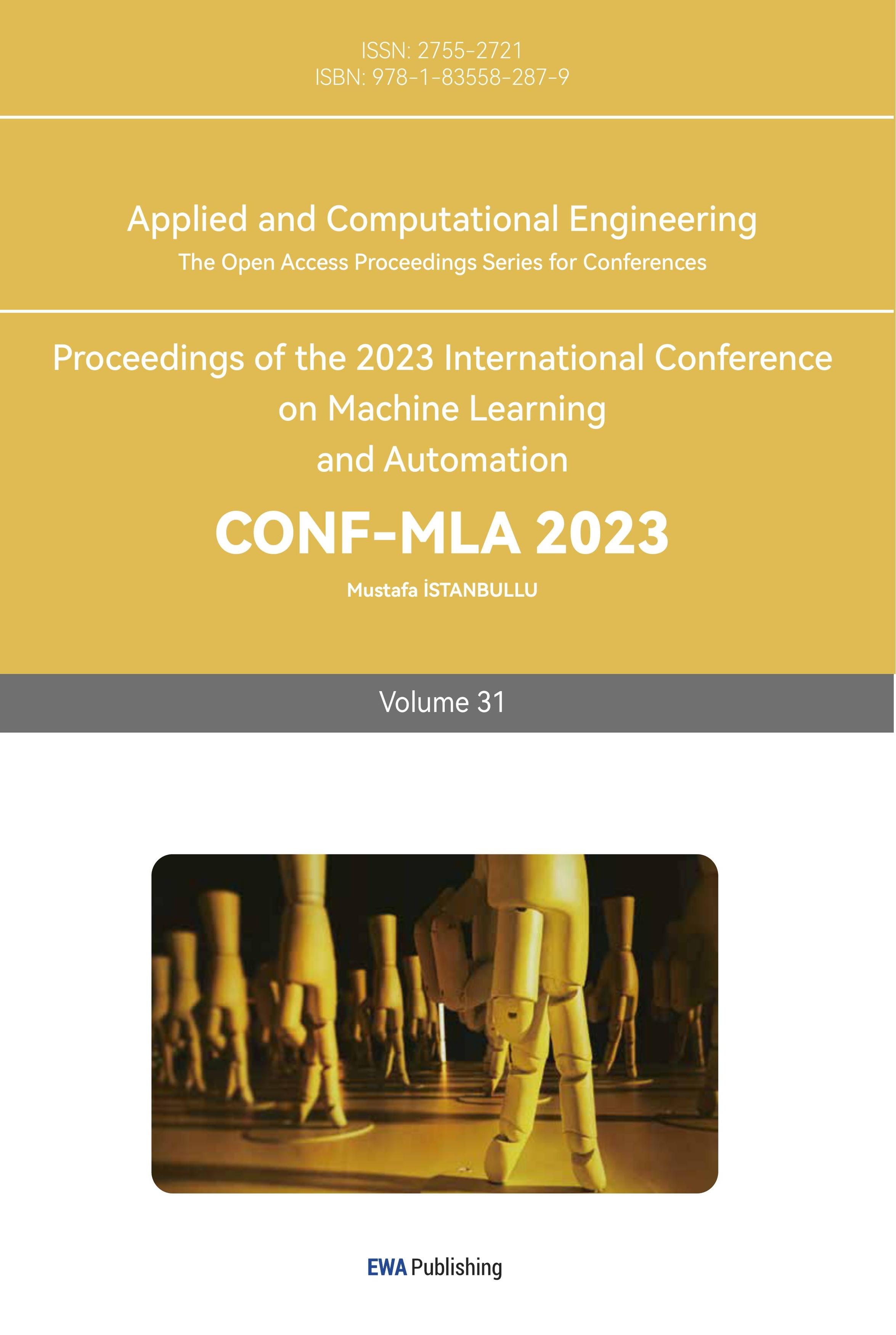References
[1]. Vallimeena P, Gopalakrishnan U, Nair B B, et al. 2019 Detection of Human Face Attributes using CNN Algorithms – A Survey Proc. 2019 International Conference on Intelligent Computing and Control Systems (ICCS) (IEEE) pp. 576-581
[2]. Hou C. 2023 Human Detection Based on YOLOv5 Application Highlights in Science, Engineering and Technology vol. 34 pp. 203-208Karahan M, Lacinkaya F, Erdonmez K, et al. 2022 Age and Gender Classification from Facial Features and Object Detection with Machine Learning Journal of Fuzzy Extension and Applications vol. 3(3) pp. 219-230
[3]. Sumit S S, Awang Rambli D R, Mirjalili S, et al. 2022 Improving the Performance of Tiny-YOLO-Based CNN Architecture for Human Detection Applications Applied Sciences vol. 12(18) pp. 9331
[4]. Priya K P L, Jyothirmai I, Akshaya G, et al. 2023 Identification of Autism in Children Using Static Facial Features and Deep Neural Networks Turkish Journal of Computer and Mathematics Education (TURCOMAT) vol. 14(2) pp. 704-715
[5]. Jabraelzadeh P, Charmin A, Ebadpore M. 2020 Hybrid Method for Face Detection, Gender Recognition, Facial Landmarks Localization and Pose Estimation Using Deep Learning to Improve Accuracy Journal of Artificial Intelligence in Electrical Engineering vol. 8(32) pp. 1-14
[6]. Vishwakarma H, Verma G, Singh S, et al. 2019 Single Shot Multi-Face Detection & Gender Recognition Proc. 2nd International Conference on Advanced Computing and Software Engineering (ICACSE)
[7]. Gawande U, Hajari K, Golhar Y. 2022 SIRA: Scale Illumination Rotation Affine Invariant Mask R-CNN for Pedestrian Detection Applied Intelligence vol. 52(9) pp. 10398-10416
[8]. Lee S, Hwang J, Kim J, et al. 2023 CNN-Based Crosswalk Pedestrian Situation Recognition System Using Mask-R-CNN and CDA Applied Sciences vol. 13(7) pp. 4291
[9]. Nagajyothi D, Charan P S, Zeeshan M, et al. 2023 Image Enhancement for Pedestrian Detection at Night Time Proc. 2023 2nd International Conference for Innovation in Technology (INOCON) (IEEE) pp. 1-7
Cite this article
Zhong,Z. (2024). Pedestrian detection and gender recognition utilizing YOLO and CNN algorithms. Applied and Computational Engineering,31,133-138.
Data availability
The datasets used and/or analyzed during the current study will be available from the authors upon reasonable request.
Disclaimer/Publisher's Note
The statements, opinions and data contained in all publications are solely those of the individual author(s) and contributor(s) and not of EWA Publishing and/or the editor(s). EWA Publishing and/or the editor(s) disclaim responsibility for any injury to people or property resulting from any ideas, methods, instructions or products referred to in the content.
About volume
Volume title: Proceedings of the 2023 International Conference on Machine Learning and Automation
© 2024 by the author(s). Licensee EWA Publishing, Oxford, UK. This article is an open access article distributed under the terms and
conditions of the Creative Commons Attribution (CC BY) license. Authors who
publish this series agree to the following terms:
1. Authors retain copyright and grant the series right of first publication with the work simultaneously licensed under a Creative Commons
Attribution License that allows others to share the work with an acknowledgment of the work's authorship and initial publication in this
series.
2. Authors are able to enter into separate, additional contractual arrangements for the non-exclusive distribution of the series's published
version of the work (e.g., post it to an institutional repository or publish it in a book), with an acknowledgment of its initial
publication in this series.
3. Authors are permitted and encouraged to post their work online (e.g., in institutional repositories or on their website) prior to and
during the submission process, as it can lead to productive exchanges, as well as earlier and greater citation of published work (See
Open access policy for details).
References
[1]. Vallimeena P, Gopalakrishnan U, Nair B B, et al. 2019 Detection of Human Face Attributes using CNN Algorithms – A Survey Proc. 2019 International Conference on Intelligent Computing and Control Systems (ICCS) (IEEE) pp. 576-581
[2]. Hou C. 2023 Human Detection Based on YOLOv5 Application Highlights in Science, Engineering and Technology vol. 34 pp. 203-208Karahan M, Lacinkaya F, Erdonmez K, et al. 2022 Age and Gender Classification from Facial Features and Object Detection with Machine Learning Journal of Fuzzy Extension and Applications vol. 3(3) pp. 219-230
[3]. Sumit S S, Awang Rambli D R, Mirjalili S, et al. 2022 Improving the Performance of Tiny-YOLO-Based CNN Architecture for Human Detection Applications Applied Sciences vol. 12(18) pp. 9331
[4]. Priya K P L, Jyothirmai I, Akshaya G, et al. 2023 Identification of Autism in Children Using Static Facial Features and Deep Neural Networks Turkish Journal of Computer and Mathematics Education (TURCOMAT) vol. 14(2) pp. 704-715
[5]. Jabraelzadeh P, Charmin A, Ebadpore M. 2020 Hybrid Method for Face Detection, Gender Recognition, Facial Landmarks Localization and Pose Estimation Using Deep Learning to Improve Accuracy Journal of Artificial Intelligence in Electrical Engineering vol. 8(32) pp. 1-14
[6]. Vishwakarma H, Verma G, Singh S, et al. 2019 Single Shot Multi-Face Detection & Gender Recognition Proc. 2nd International Conference on Advanced Computing and Software Engineering (ICACSE)
[7]. Gawande U, Hajari K, Golhar Y. 2022 SIRA: Scale Illumination Rotation Affine Invariant Mask R-CNN for Pedestrian Detection Applied Intelligence vol. 52(9) pp. 10398-10416
[8]. Lee S, Hwang J, Kim J, et al. 2023 CNN-Based Crosswalk Pedestrian Situation Recognition System Using Mask-R-CNN and CDA Applied Sciences vol. 13(7) pp. 4291
[9]. Nagajyothi D, Charan P S, Zeeshan M, et al. 2023 Image Enhancement for Pedestrian Detection at Night Time Proc. 2023 2nd International Conference for Innovation in Technology (INOCON) (IEEE) pp. 1-7









